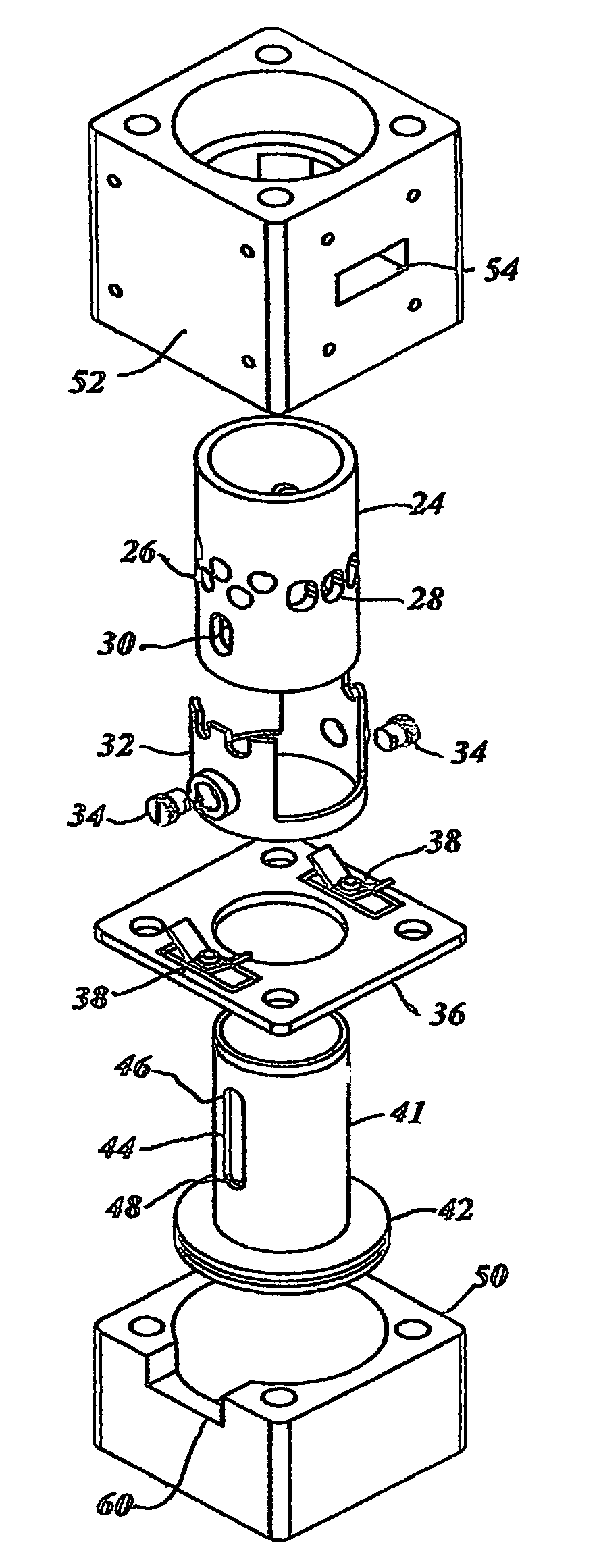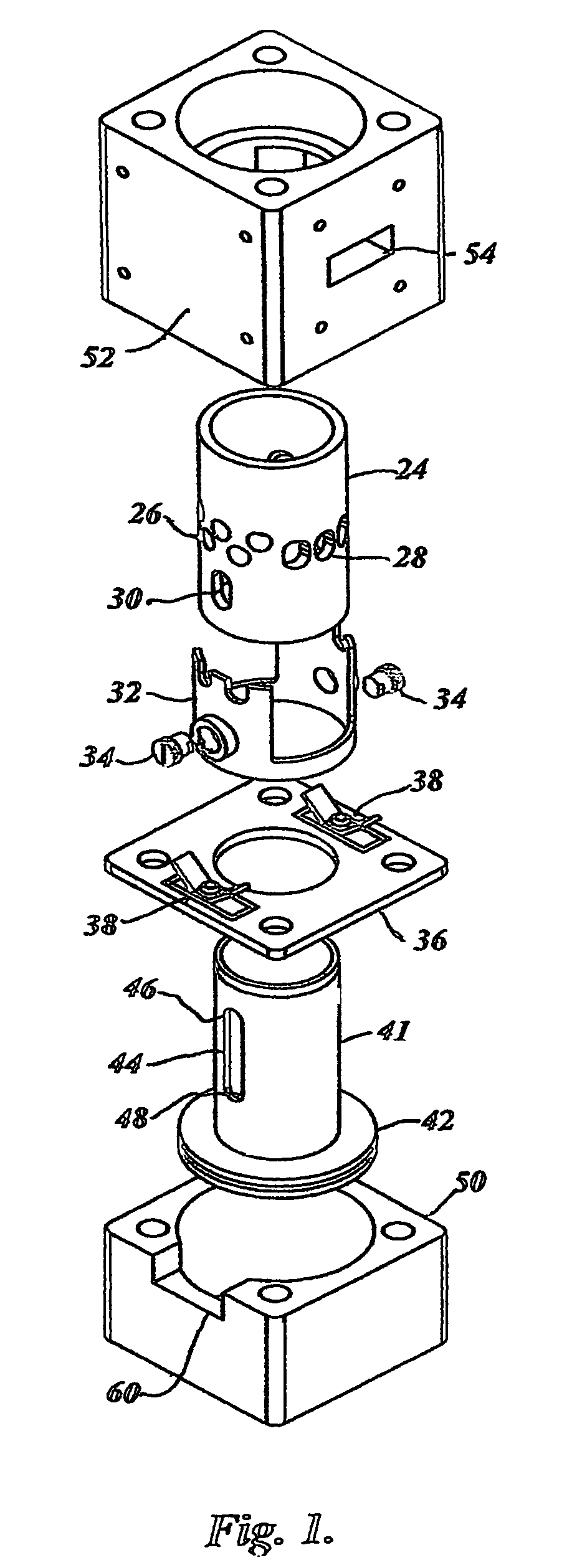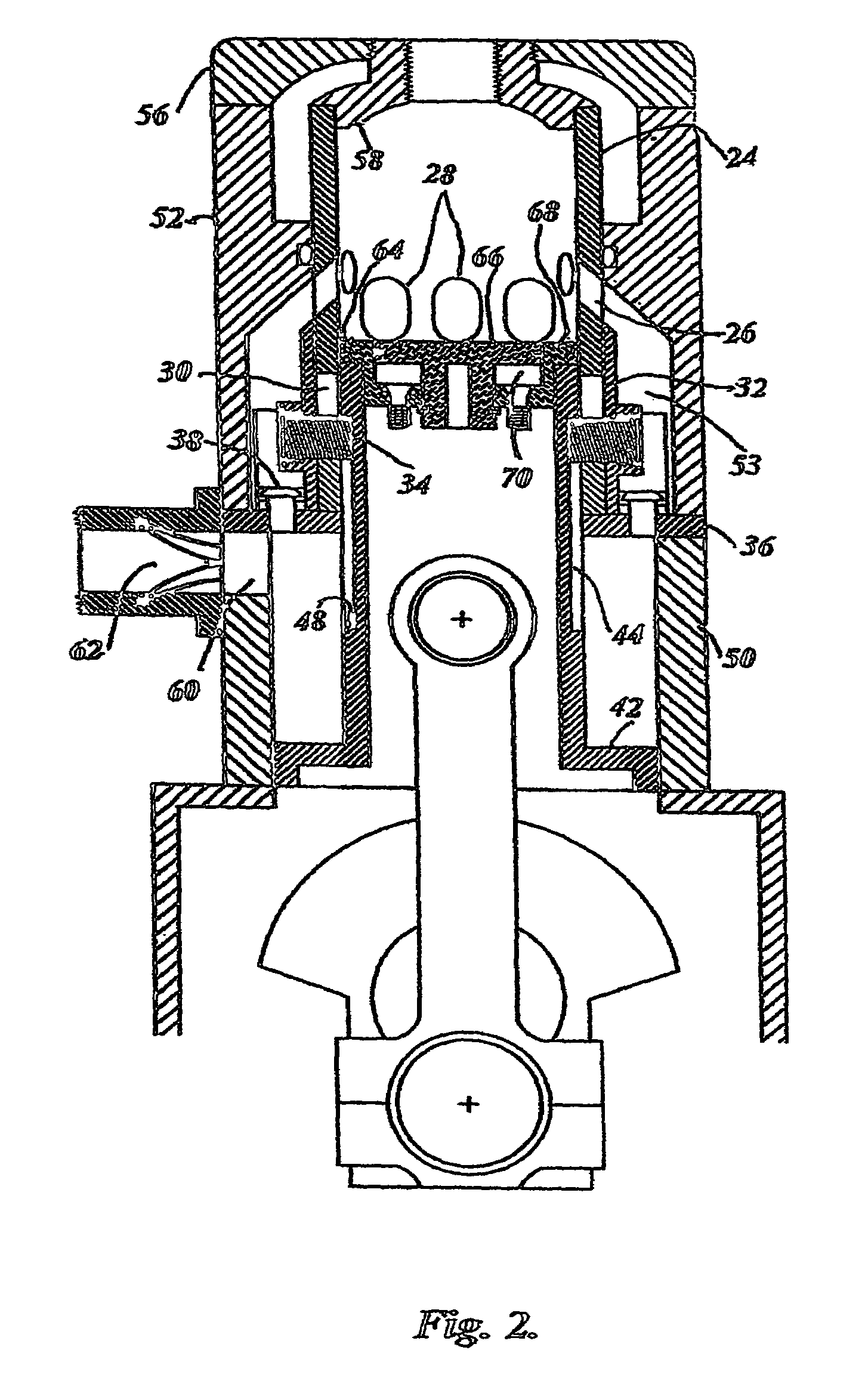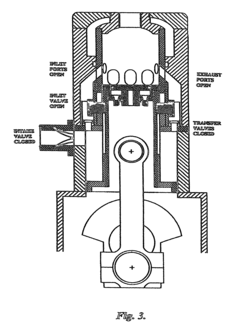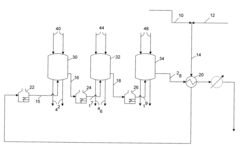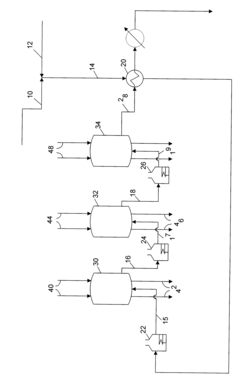Impact of 2-Methylpentane on Combustion Mechanisms in Engines
JUL 25, 20259 MIN READ
Generate Your Research Report Instantly with AI Agent
Patsnap Eureka helps you evaluate technical feasibility & market potential.
2-Methylpentane and Engine Combustion: Background and Objectives
The study of 2-Methylpentane's impact on engine combustion mechanisms has gained significant attention in recent years due to its potential as a fuel component and its effects on engine performance and emissions. This branched alkane, with its unique molecular structure, has become a focal point in the ongoing quest for more efficient and cleaner combustion processes.
The evolution of engine technology has been driven by the need for improved fuel efficiency and reduced environmental impact. As global regulations on emissions become increasingly stringent, researchers and engineers are exploring alternative fuel compositions and additives to meet these challenges. 2-Methylpentane, a component found in various gasoline blends, has emerged as a compound of interest due to its potential to influence key combustion characteristics.
The primary objective of investigating 2-Methylpentane's role in combustion mechanisms is to understand its effects on ignition timing, flame propagation, and overall combustion efficiency. By comprehending these aspects, researchers aim to optimize fuel formulations and engine designs to achieve better performance while minimizing harmful emissions.
One of the key areas of focus is the impact of 2-Methylpentane on the octane rating of fuel blends. The octane number is a critical parameter that determines a fuel's resistance to knock, which can significantly affect engine efficiency and longevity. Understanding how 2-Methylpentane influences this property can lead to the development of more knock-resistant fuels, enabling higher compression ratios and improved thermal efficiency in modern engines.
Another important aspect of this research is the examination of 2-Methylpentane's effect on the formation of pollutants during combustion. As environmental concerns continue to drive technological advancements, there is a pressing need to reduce emissions of nitrogen oxides (NOx), carbon monoxide (CO), and unburned hydrocarbons. The unique molecular structure of 2-Methylpentane may offer insights into mitigating these emissions through careful fuel composition design.
The investigation into 2-Methylpentane also extends to its potential role in advanced combustion strategies, such as homogeneous charge compression ignition (HCCI) and low-temperature combustion (LTC). These innovative approaches promise significant improvements in efficiency and emissions reduction, and understanding the behavior of fuel components like 2-Methylpentane is crucial for their successful implementation.
As research in this field progresses, the ultimate goal is to develop a comprehensive understanding of how 2-Methylpentane and similar compounds interact with various engine parameters and operating conditions. This knowledge will be instrumental in guiding the design of next-generation engines and fuel systems, paving the way for more sustainable transportation solutions in the face of growing environmental challenges.
The evolution of engine technology has been driven by the need for improved fuel efficiency and reduced environmental impact. As global regulations on emissions become increasingly stringent, researchers and engineers are exploring alternative fuel compositions and additives to meet these challenges. 2-Methylpentane, a component found in various gasoline blends, has emerged as a compound of interest due to its potential to influence key combustion characteristics.
The primary objective of investigating 2-Methylpentane's role in combustion mechanisms is to understand its effects on ignition timing, flame propagation, and overall combustion efficiency. By comprehending these aspects, researchers aim to optimize fuel formulations and engine designs to achieve better performance while minimizing harmful emissions.
One of the key areas of focus is the impact of 2-Methylpentane on the octane rating of fuel blends. The octane number is a critical parameter that determines a fuel's resistance to knock, which can significantly affect engine efficiency and longevity. Understanding how 2-Methylpentane influences this property can lead to the development of more knock-resistant fuels, enabling higher compression ratios and improved thermal efficiency in modern engines.
Another important aspect of this research is the examination of 2-Methylpentane's effect on the formation of pollutants during combustion. As environmental concerns continue to drive technological advancements, there is a pressing need to reduce emissions of nitrogen oxides (NOx), carbon monoxide (CO), and unburned hydrocarbons. The unique molecular structure of 2-Methylpentane may offer insights into mitigating these emissions through careful fuel composition design.
The investigation into 2-Methylpentane also extends to its potential role in advanced combustion strategies, such as homogeneous charge compression ignition (HCCI) and low-temperature combustion (LTC). These innovative approaches promise significant improvements in efficiency and emissions reduction, and understanding the behavior of fuel components like 2-Methylpentane is crucial for their successful implementation.
As research in this field progresses, the ultimate goal is to develop a comprehensive understanding of how 2-Methylpentane and similar compounds interact with various engine parameters and operating conditions. This knowledge will be instrumental in guiding the design of next-generation engines and fuel systems, paving the way for more sustainable transportation solutions in the face of growing environmental challenges.
Market Demand for Enhanced Engine Performance
The demand for enhanced engine performance has been steadily growing across various sectors, driven by the need for improved fuel efficiency, reduced emissions, and increased power output. This market trend is particularly evident in the automotive industry, where consumers and regulators alike are pushing for more efficient and environmentally friendly vehicles. The use of 2-Methylpentane as a fuel additive or component has garnered attention due to its potential to impact combustion mechanisms in engines positively.
In the automotive sector, manufacturers are constantly seeking ways to optimize engine performance to meet stringent emissions standards while maintaining or improving vehicle performance. This has led to a surge in research and development activities focused on understanding and enhancing combustion processes. The market for high-performance fuel additives and advanced engine technologies has expanded significantly, with global sales of performance-enhancing products reaching substantial figures.
The aviation industry also presents a significant market for enhanced engine performance. With the increasing focus on reducing carbon footprints and operating costs, airlines and aircraft manufacturers are investing heavily in technologies that can improve fuel efficiency and engine longevity. The potential of 2-Methylpentane to contribute to these goals has sparked interest among industry players, leading to increased research and development efforts.
In the marine sector, there is a growing demand for cleaner and more efficient propulsion systems. Stringent international regulations on emissions from ships have created a market for innovative engine technologies and fuel solutions. The exploration of 2-Methylpentane's impact on marine engine combustion mechanisms aligns with this market trend, as shipping companies seek ways to comply with regulations while maintaining operational efficiency.
The power generation industry also represents a significant market for enhanced engine performance. As the world transitions towards cleaner energy sources, there is an increasing need for flexible and efficient power generation systems. Gas engines and combined cycle power plants could potentially benefit from the incorporation of 2-Methylpentane or similar compounds to improve combustion efficiency and reduce emissions.
Racing and high-performance vehicle markets continue to drive innovation in engine technology. The constant pursuit of higher power outputs and better fuel economy in competitive motorsports has created a niche market for advanced fuel formulations and engine optimization techniques. The potential of 2-Methylpentane to enhance combustion characteristics makes it an attractive area of study for racing teams and performance vehicle manufacturers.
As environmental concerns grow and energy efficiency becomes paramount, the market demand for technologies that can enhance engine performance while reducing environmental impact is expected to continue its upward trajectory. This trend underscores the importance of research into compounds like 2-Methylpentane and their effects on combustion mechanisms, as they may hold the key to developing the next generation of high-performance, low-emission engines across multiple industries.
In the automotive sector, manufacturers are constantly seeking ways to optimize engine performance to meet stringent emissions standards while maintaining or improving vehicle performance. This has led to a surge in research and development activities focused on understanding and enhancing combustion processes. The market for high-performance fuel additives and advanced engine technologies has expanded significantly, with global sales of performance-enhancing products reaching substantial figures.
The aviation industry also presents a significant market for enhanced engine performance. With the increasing focus on reducing carbon footprints and operating costs, airlines and aircraft manufacturers are investing heavily in technologies that can improve fuel efficiency and engine longevity. The potential of 2-Methylpentane to contribute to these goals has sparked interest among industry players, leading to increased research and development efforts.
In the marine sector, there is a growing demand for cleaner and more efficient propulsion systems. Stringent international regulations on emissions from ships have created a market for innovative engine technologies and fuel solutions. The exploration of 2-Methylpentane's impact on marine engine combustion mechanisms aligns with this market trend, as shipping companies seek ways to comply with regulations while maintaining operational efficiency.
The power generation industry also represents a significant market for enhanced engine performance. As the world transitions towards cleaner energy sources, there is an increasing need for flexible and efficient power generation systems. Gas engines and combined cycle power plants could potentially benefit from the incorporation of 2-Methylpentane or similar compounds to improve combustion efficiency and reduce emissions.
Racing and high-performance vehicle markets continue to drive innovation in engine technology. The constant pursuit of higher power outputs and better fuel economy in competitive motorsports has created a niche market for advanced fuel formulations and engine optimization techniques. The potential of 2-Methylpentane to enhance combustion characteristics makes it an attractive area of study for racing teams and performance vehicle manufacturers.
As environmental concerns grow and energy efficiency becomes paramount, the market demand for technologies that can enhance engine performance while reducing environmental impact is expected to continue its upward trajectory. This trend underscores the importance of research into compounds like 2-Methylpentane and their effects on combustion mechanisms, as they may hold the key to developing the next generation of high-performance, low-emission engines across multiple industries.
Current Challenges in 2-Methylpentane Combustion Research
The research on 2-methylpentane combustion in engines faces several significant challenges that hinder a comprehensive understanding of its impact on combustion mechanisms. One of the primary obstacles is the complexity of the chemical kinetics involved in the combustion process. 2-methylpentane, being a branched alkane, exhibits intricate reaction pathways that are not fully elucidated, making it difficult to develop accurate and detailed reaction mechanisms.
Another challenge lies in the experimental limitations for studying 2-methylpentane combustion under engine-relevant conditions. High-pressure and high-temperature environments typical of internal combustion engines are challenging to replicate in laboratory settings while maintaining precise control and measurement capabilities. This gap between idealized laboratory conditions and real-world engine environments complicates the validation of theoretical models and simulations.
The interaction between 2-methylpentane and other fuel components in practical engine applications presents an additional layer of complexity. Most engines operate with fuel blends rather than pure compounds, and the synergistic or antagonistic effects between 2-methylpentane and other hydrocarbons are not well understood. This knowledge gap impedes the accurate prediction of combustion behavior in real-world scenarios.
Furthermore, the impact of 2-methylpentane on engine performance metrics such as efficiency, emissions, and knock resistance is not fully characterized. While some studies have shown promising results in terms of improved octane rating, the broader implications for engine design and optimization remain unclear. This uncertainty poses challenges for engine manufacturers seeking to leverage the potential benefits of 2-methylpentane in fuel formulations.
The development of advanced diagnostic techniques for in-situ measurements of 2-methylpentane combustion intermediates and products in engine environments is another area of ongoing challenge. Current limitations in spatial and temporal resolution of measurement techniques hinder the ability to capture transient phenomena and validate detailed kinetic models.
Lastly, the computational demands for simulating 2-methylpentane combustion in realistic engine conditions present a significant hurdle. The need for high-fidelity models that incorporate detailed chemistry, turbulence, and multiphase interactions strains current computational resources, limiting the scope and accuracy of predictive simulations.
Addressing these challenges requires a multidisciplinary approach, combining advances in experimental techniques, computational modeling, and theoretical understanding of combustion chemistry. Overcoming these obstacles will be crucial for fully harnessing the potential of 2-methylpentane in improving engine performance and efficiency.
Another challenge lies in the experimental limitations for studying 2-methylpentane combustion under engine-relevant conditions. High-pressure and high-temperature environments typical of internal combustion engines are challenging to replicate in laboratory settings while maintaining precise control and measurement capabilities. This gap between idealized laboratory conditions and real-world engine environments complicates the validation of theoretical models and simulations.
The interaction between 2-methylpentane and other fuel components in practical engine applications presents an additional layer of complexity. Most engines operate with fuel blends rather than pure compounds, and the synergistic or antagonistic effects between 2-methylpentane and other hydrocarbons are not well understood. This knowledge gap impedes the accurate prediction of combustion behavior in real-world scenarios.
Furthermore, the impact of 2-methylpentane on engine performance metrics such as efficiency, emissions, and knock resistance is not fully characterized. While some studies have shown promising results in terms of improved octane rating, the broader implications for engine design and optimization remain unclear. This uncertainty poses challenges for engine manufacturers seeking to leverage the potential benefits of 2-methylpentane in fuel formulations.
The development of advanced diagnostic techniques for in-situ measurements of 2-methylpentane combustion intermediates and products in engine environments is another area of ongoing challenge. Current limitations in spatial and temporal resolution of measurement techniques hinder the ability to capture transient phenomena and validate detailed kinetic models.
Lastly, the computational demands for simulating 2-methylpentane combustion in realistic engine conditions present a significant hurdle. The need for high-fidelity models that incorporate detailed chemistry, turbulence, and multiphase interactions strains current computational resources, limiting the scope and accuracy of predictive simulations.
Addressing these challenges requires a multidisciplinary approach, combining advances in experimental techniques, computational modeling, and theoretical understanding of combustion chemistry. Overcoming these obstacles will be crucial for fully harnessing the potential of 2-methylpentane in improving engine performance and efficiency.
Existing Solutions for Optimizing 2-Methylpentane Combustion
01 Combustion mechanism analysis
The combustion mechanism of 2-methylpentane involves complex chemical reactions and intermediate species formation. Studies focus on understanding the reaction pathways, kinetics, and product distribution during the combustion process. This knowledge is crucial for optimizing engine performance and reducing emissions.- Combustion mechanism analysis: The combustion mechanism of 2-methylpentane involves complex chemical reactions and intermediate species formation. Studies focus on understanding the reaction pathways, kinetics, and product distribution during the combustion process. This knowledge is crucial for optimizing engine performance and reducing emissions.
- Fuel additives and blends: Research explores the use of 2-methylpentane in fuel blends or as an additive to improve combustion characteristics. These studies investigate how the addition of 2-methylpentane affects ignition delay, flame propagation, and overall combustion efficiency in various engine types.
- Emission reduction strategies: Efforts are made to develop strategies for reducing emissions during 2-methylpentane combustion. This includes optimizing engine parameters, developing advanced catalytic converters, and exploring low-temperature combustion techniques to minimize the formation of pollutants such as NOx and particulate matter.
- Combustion modeling and simulation: Computational models and simulations are developed to predict and analyze the combustion behavior of 2-methylpentane under various conditions. These tools help in understanding the complex interactions between fuel properties, engine design, and operating parameters, leading to improved combustion efficiency and reduced emissions.
- Ignition and flame propagation studies: Research focuses on the ignition characteristics and flame propagation of 2-methylpentane in different combustion environments. This includes studying auto-ignition temperatures, flame speeds, and stability limits to optimize combustion chamber design and control strategies for various applications.
02 Fuel additives and blends
Research explores the use of 2-methylpentane in fuel blends or as an additive to improve combustion characteristics. These studies investigate how the addition of 2-methylpentane affects ignition delay, flame propagation, and overall combustion efficiency in various engine types.Expand Specific Solutions03 Emission reduction strategies
Efforts are made to develop strategies for reducing emissions during 2-methylpentane combustion. This includes optimizing engine parameters, developing catalytic converters, and exploring exhaust gas recirculation techniques to minimize harmful pollutants such as NOx, CO, and unburned hydrocarbons.Expand Specific Solutions04 Combustion modeling and simulation
Advanced computational models and simulation techniques are employed to predict and analyze the combustion behavior of 2-methylpentane. These models help in understanding the complex interactions between fluid dynamics, chemical kinetics, and heat transfer during the combustion process.Expand Specific Solutions05 Engine design optimization
Research focuses on optimizing engine designs to better accommodate the combustion characteristics of 2-methylpentane. This includes modifications to combustion chamber geometry, fuel injection systems, and ignition timing to enhance performance and efficiency while minimizing emissions.Expand Specific Solutions
Key Players in Fuel and Engine Research
The impact of 2-Methylpentane on combustion mechanisms in engines represents a niche area within the broader field of automotive and fuel technology. The market is in a relatively early stage of development, with ongoing research and potential for growth. Key players in this space include major automotive manufacturers like Ford, GM, and Volvo, as well as oil and chemical companies such as Shell, ExxonMobil, and Afton Chemical. These companies are investing in research and development to improve engine efficiency and reduce emissions. The technology's maturity varies, with some companies like Ford and Shell leading in patent filings and practical applications, while others are still in the experimental stages.
Ford Global Technologies LLC
Technical Solution: Ford has developed advanced combustion strategies incorporating 2-methylpentane to enhance engine efficiency and reduce emissions. Their research focuses on optimizing fuel blends containing 2-methylpentane to improve cold start performance and reduce knock tendency in gasoline direct injection (GDI) engines [1]. Ford's approach involves using computational fluid dynamics (CFD) simulations coupled with detailed chemical kinetics models to predict the impact of 2-methylpentane on combustion characteristics, including flame speed, ignition delay, and emissions formation [3]. They have also explored the synergistic effects of 2-methylpentane with other fuel components to create tailored fuel formulations for specific engine operating conditions [5].
Strengths: Extensive experience in engine development and fuel optimization. Access to advanced simulation tools and testing facilities. Weaknesses: May face challenges in balancing performance improvements with stringent emissions regulations.
Caterpillar, Inc.
Technical Solution: Caterpillar has investigated the use of 2-methylpentane as a component in alternative fuel blends for their heavy-duty diesel engines. Their research focuses on understanding the impact of 2-methylpentane on cetane number, ignition quality, and overall combustion behavior in compression ignition engines [2]. Caterpillar's approach involves experimental studies using single-cylinder research engines equipped with advanced diagnostics, such as in-cylinder pressure measurement and heat release analysis [4]. They have also developed predictive models to assess the influence of 2-methylpentane on engine performance, fuel consumption, and emissions across various operating conditions [6]. Caterpillar's efforts aim to optimize fuel formulations containing 2-methylpentane to meet stringent emissions standards while maintaining or improving engine efficiency and durability.
Strengths: Extensive experience in heavy-duty engine development and testing. Strong focus on practical applications and real-world performance. Weaknesses: May face challenges in adapting 2-methylpentane-based fuels to existing engine designs without significant modifications.
Core Innovations in 2-Methylpentane Combustion Mechanisms
Supercharged two-cycle engines employing novel single element reciprocating shuttle inlet valve mechanisms and with a variable compression ratio
PatentInactiveUS7341040B1
Innovation
- The introduction of a novel reciprocating shuttle inlet valve with a lost-motion arrangement between the valve, engine cylinder, and piston skirt, eliminating the need for complex mechanisms and allowing for rapid port opening and closing, enabling efficient supercharging and scavenging without the drawbacks of traditional valve systems.
Pentane Catalytic Cracking Process
PatentInactiveUS20090099398A1
Innovation
- A process involving a series of reactors with catalysts that crack paraffins with 4 to 6 carbon atoms to produce ethylene and propylene, where the feedstream is heated and passed through multiple reactors in series, operating at specific temperature and pressure conditions, with catalyst regeneration and controlled weight hourly space velocity.
Environmental Impact of 2-Methylpentane Usage
The environmental impact of 2-methylpentane usage in engines is a critical consideration in the broader context of combustion mechanisms and fuel efficiency. As a branched alkane, 2-methylpentane exhibits unique properties that influence its environmental footprint when used as a fuel component.
One of the primary environmental concerns associated with 2-methylpentane is its contribution to air pollution. When combusted in engines, it produces various emissions, including carbon dioxide (CO2), carbon monoxide (CO), nitrogen oxides (NOx), and particulate matter. These pollutants have significant implications for air quality and human health, particularly in urban areas with high traffic density.
The ozone-forming potential of 2-methylpentane is another crucial environmental factor. As a volatile organic compound (VOC), it can react with nitrogen oxides in the presence of sunlight to form ground-level ozone, a major component of smog. This photochemical smog can lead to respiratory issues and damage vegetation, impacting both human health and ecosystems.
In terms of greenhouse gas emissions, the use of 2-methylpentane in engines contributes to the overall carbon footprint of the transportation sector. While its carbon content is similar to other hydrocarbon fuels, the specific combustion characteristics of 2-methylpentane may influence the efficiency of engines and, consequently, the amount of CO2 released per unit of energy produced.
The production and distribution of 2-methylpentane also have environmental implications. The refining process requires energy and resources, contributing to industrial emissions and potential water pollution. Additionally, the transportation and storage of this fuel component pose risks of spills and leaks, which can contaminate soil and water resources.
From a lifecycle perspective, the environmental impact of 2-methylpentane extends beyond its immediate use in engines. The extraction of fossil fuels, from which 2-methylpentane is derived, has significant ecological consequences, including habitat disruption and the potential for oil spills.
However, it is important to note that the use of 2-methylpentane in fuel blends can potentially offer some environmental benefits. Its high octane rating may allow for more efficient engine operation, potentially reducing overall fuel consumption and emissions. Furthermore, its role in improving fuel performance could contribute to the development of more environmentally friendly engine designs.
As environmental regulations become increasingly stringent, the use of 2-methylpentane in engines faces scrutiny. Efforts to reduce emissions and improve air quality have led to the exploration of alternative fuel components and engine technologies. The future environmental impact of 2-methylpentane will likely depend on advancements in emission control technologies and the evolution of fuel standards.
One of the primary environmental concerns associated with 2-methylpentane is its contribution to air pollution. When combusted in engines, it produces various emissions, including carbon dioxide (CO2), carbon monoxide (CO), nitrogen oxides (NOx), and particulate matter. These pollutants have significant implications for air quality and human health, particularly in urban areas with high traffic density.
The ozone-forming potential of 2-methylpentane is another crucial environmental factor. As a volatile organic compound (VOC), it can react with nitrogen oxides in the presence of sunlight to form ground-level ozone, a major component of smog. This photochemical smog can lead to respiratory issues and damage vegetation, impacting both human health and ecosystems.
In terms of greenhouse gas emissions, the use of 2-methylpentane in engines contributes to the overall carbon footprint of the transportation sector. While its carbon content is similar to other hydrocarbon fuels, the specific combustion characteristics of 2-methylpentane may influence the efficiency of engines and, consequently, the amount of CO2 released per unit of energy produced.
The production and distribution of 2-methylpentane also have environmental implications. The refining process requires energy and resources, contributing to industrial emissions and potential water pollution. Additionally, the transportation and storage of this fuel component pose risks of spills and leaks, which can contaminate soil and water resources.
From a lifecycle perspective, the environmental impact of 2-methylpentane extends beyond its immediate use in engines. The extraction of fossil fuels, from which 2-methylpentane is derived, has significant ecological consequences, including habitat disruption and the potential for oil spills.
However, it is important to note that the use of 2-methylpentane in fuel blends can potentially offer some environmental benefits. Its high octane rating may allow for more efficient engine operation, potentially reducing overall fuel consumption and emissions. Furthermore, its role in improving fuel performance could contribute to the development of more environmentally friendly engine designs.
As environmental regulations become increasingly stringent, the use of 2-methylpentane in engines faces scrutiny. Efforts to reduce emissions and improve air quality have led to the exploration of alternative fuel components and engine technologies. The future environmental impact of 2-methylpentane will likely depend on advancements in emission control technologies and the evolution of fuel standards.
Regulatory Framework for Fuel Additives
The regulatory framework for fuel additives plays a crucial role in governing the use of substances like 2-methylpentane in engine fuels. In the United States, the Environmental Protection Agency (EPA) is the primary regulatory body responsible for overseeing fuel additives under the Clean Air Act. The EPA maintains a comprehensive list of registered fuel additives and requires manufacturers to submit detailed information about new additives before they can be introduced into the market.
The registration process for fuel additives involves rigorous testing to ensure compliance with emission standards and to assess potential health and environmental impacts. Manufacturers must provide data on the chemical composition of the additive, its intended use, and any potential effects on engine performance and emissions. The EPA also requires information on the additive's impact on fuel economy and its compatibility with existing engine technologies.
In the European Union, the regulatory landscape for fuel additives is governed by the Registration, Evaluation, Authorization and Restriction of Chemicals (REACH) regulation. REACH mandates that manufacturers and importers of chemical substances, including fuel additives, register their products with the European Chemicals Agency (ECHA). This process involves submitting comprehensive safety data and risk assessments for each substance.
The International Organization for Standardization (ISO) has established several standards related to fuel additives, including ISO 12156 for diesel fuel lubricity improvers and ISO 22241 for diesel exhaust fluid. These standards provide guidelines for testing and evaluating the performance of fuel additives, ensuring consistency across different markets and applications.
Regulatory bodies also set limits on the concentration of specific additives in fuel. For instance, the use of methylcyclopentadienyl manganese tricarbonyl (MMT) as an octane enhancer is restricted in many countries due to concerns about its potential health effects. Similarly, the concentration of ethanol in gasoline is regulated to ensure compatibility with existing engine designs and to mitigate potential environmental impacts.
As research continues to uncover the effects of various fuel additives on combustion mechanisms and emissions, regulatory frameworks are continually evolving. The impact of 2-methylpentane on engine performance and emissions may lead to new regulations or modifications to existing ones, depending on the findings of ongoing studies and risk assessments. Regulatory bodies must balance the potential benefits of improved engine performance against any potential environmental or health risks associated with the use of such additives.
The registration process for fuel additives involves rigorous testing to ensure compliance with emission standards and to assess potential health and environmental impacts. Manufacturers must provide data on the chemical composition of the additive, its intended use, and any potential effects on engine performance and emissions. The EPA also requires information on the additive's impact on fuel economy and its compatibility with existing engine technologies.
In the European Union, the regulatory landscape for fuel additives is governed by the Registration, Evaluation, Authorization and Restriction of Chemicals (REACH) regulation. REACH mandates that manufacturers and importers of chemical substances, including fuel additives, register their products with the European Chemicals Agency (ECHA). This process involves submitting comprehensive safety data and risk assessments for each substance.
The International Organization for Standardization (ISO) has established several standards related to fuel additives, including ISO 12156 for diesel fuel lubricity improvers and ISO 22241 for diesel exhaust fluid. These standards provide guidelines for testing and evaluating the performance of fuel additives, ensuring consistency across different markets and applications.
Regulatory bodies also set limits on the concentration of specific additives in fuel. For instance, the use of methylcyclopentadienyl manganese tricarbonyl (MMT) as an octane enhancer is restricted in many countries due to concerns about its potential health effects. Similarly, the concentration of ethanol in gasoline is regulated to ensure compatibility with existing engine designs and to mitigate potential environmental impacts.
As research continues to uncover the effects of various fuel additives on combustion mechanisms and emissions, regulatory frameworks are continually evolving. The impact of 2-methylpentane on engine performance and emissions may lead to new regulations or modifications to existing ones, depending on the findings of ongoing studies and risk assessments. Regulatory bodies must balance the potential benefits of improved engine performance against any potential environmental or health risks associated with the use of such additives.
Unlock deeper insights with Patsnap Eureka Quick Research — get a full tech report to explore trends and direct your research. Try now!
Generate Your Research Report Instantly with AI Agent
Supercharge your innovation with Patsnap Eureka AI Agent Platform!
